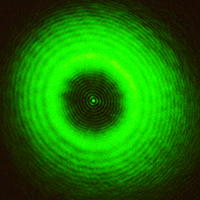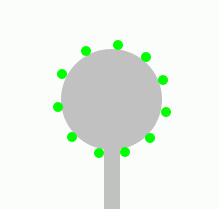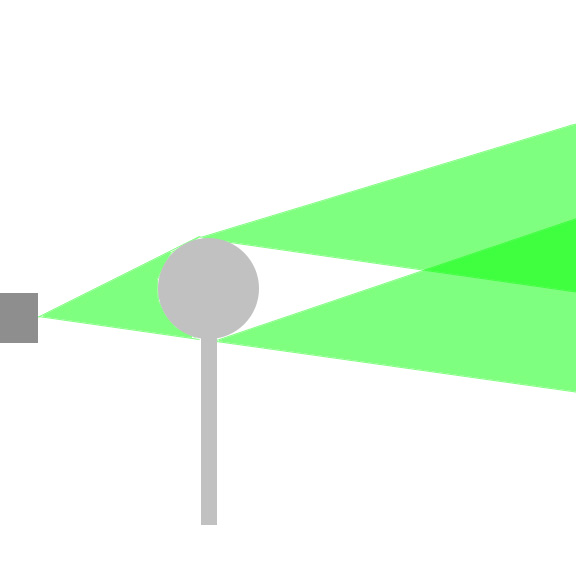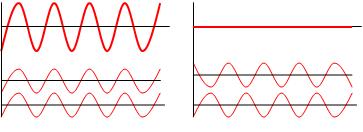

While light has properties of both waves and particles, this demonstrates the wave properties of light. According to the wave theory of light, the light will expand after traveling through a space smaller than half a centimeter, as shown in Figure 3.
In this demonstration, the light appears to bend around the head of the pin, forming interference patterns in the pin's shadow. This is explained by Huygen's Principle. Each point at the circumference of the pin is treated as a new point source of light (figure 4 left). These point sources will spread out according to the wave theory of light, and cross paths (figure 4 right).


Where the light crosses paths, the light waves will interfere with each other, or 'add up.' Where the light is constructive, there will be bright fringes, and where the light is deconstructive there will be dark fringes.

The shapes that these fringes form depend on the object that the light is diffracting (bending) around. However, this shape cannot always be easily predicted.
All of the point sources are in phase at the central azis, so the waves will add up and create a bright spot at the center of the image.
See our tips page, for advice and notes on how to set up the low cost optical bench here.